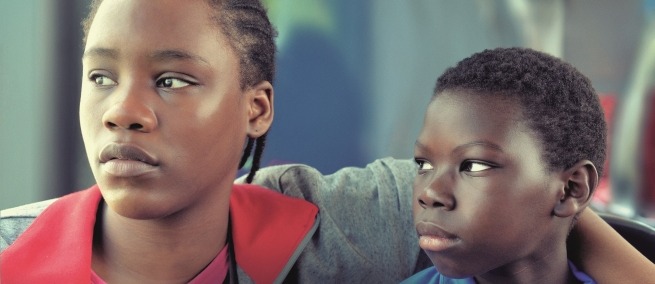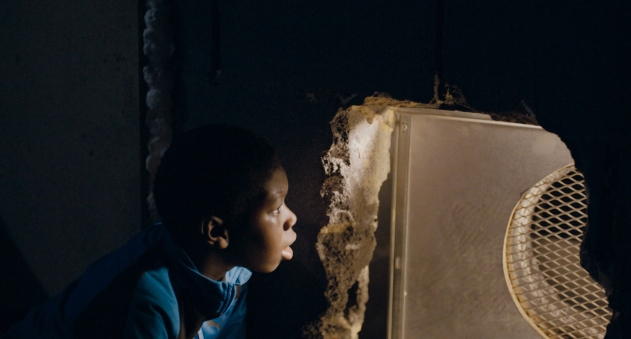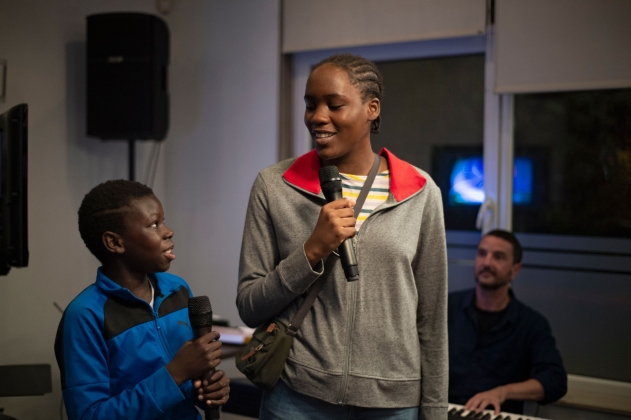
Is realism an exact science? The Belgian brothers Jean-Pierre and Luc Dardenne have cultivated a defining and influential style of movie realism over the past 25 years without falling into formulas. Since LA PROMESSE (1996), they’ve followed usually young protagonists through the merciless logic of cash-strapped predicaments and looming law enforcement. The scenarios and the camerawork are grippingly succinct, keeping us in the moment with their characters, as uncomfortable as it might get. Among their fans is Martin Scorsese, who said of TORI AND LOKITA: “I’ve always admired the way that Jean-Pierre and Luc Dardenne make movies—their mastery is inseparable from their spiritual and ethical commitment to their characters, trying to make their way through an unforgiving world.”
As in LA PROMESSE and LORNA’S SILENCE (2008)—about an Albanian woman trying to get Belgian citizenship—the Dardennes bring an artful but also sociological eye for the details of life as undocumented residents, spanning institutional structures and off-the-books reality. Their latest film focuses on a teenage girl, Lokita (Joely Mbundu), and a boy, Tori (Pablo Schils), who pose as sister and brother in an attempt to secure legal residency in Belgium.
TORI AND LOKITA is in theaters now–including at Museum of the Moving Image–with retrospectives of the Dardennes at IFC Center in New York and the American Cinematheque in Los Angeles.
How has your aesthetic of realism changed since the 1990s?
Luc: I would pose the question differently. I would say, how do we keep the same innocence and energy for each new film? Even if we try to find that same feeling or spirit of the first time that we made a movie, it's not really the first time—but we try. We want to avoid being trapped into formulas or repeating what we did in the past. We have to rekindle the feeling of necessity.
I wonder how technical aspects contribute to the sense of realism. Could you talk about what kind of camera you used for TORI AND LOKITA?
Luc: I don’t remember the model number. But we always had the camera on handles. We hold it with handles—we don't have it like this [with the lens to one eye]. It’s handheld so that the eye is free from being glued to the lens. We have always done that.
Jean-Pierre: I can ask our cameraman for the model! It’s nine o’clock in Belgium. [texts his cameraman] The camera is the RED Komodo. And at night in the [marijuana warehouse], that’s the RED Monstro. With Zeiss lenses, 40mm all the time.
Thinking of approaches to realism in the moment, I recently re-watched ELEPHANTby Gus Van Sant—
Luc: Yeah, good film! That was a Steadicam, right? We don't use it.
Why not?
Luc: Because it's too smooth.
There need to be bumps in the road.
Luc: Yeah. But for ELEPHANT, it’s a good choice, because they’re not really there in a way.
What was the first scene that you wrote for TORI AND LOKITA?
Luc: The first scene that we wrote is the first scene of the film: Lokita standing in front of the camera.
Why do you start the movie with that scene?
Luc: Ah, pourquoi... It’s a little bit like the Fotomat. We wanted her to be sort of trapped in that image. And it’s the crux of the film: the challenge for her is to get papers [such as photo ID, etc.]—will she have them or won’t she? She's in the worst of prisons, in a sense, because of that lack of papers. You see that the [immigration] interviewer knows that she's lying, and it promotes the feeling that she’s never going to have these papers.

Still from TORI AND LOKITA
She is fortunate to have Tori, and I thought the close dynamic between the two performers is so important to getting a sense of their day-to-day reality. How did you achieve that? I thought of them as two acrobats, helping each other.
Jean-Pierre: Yes. Since the beginning of the initial script and the story of their friendship, we wanted Lokita to be anchored into the ground with a certain heaviness, whereas Tori is like a little sprite. He jumps into action and gives the feeling that he's going to find a solution. Ultimately, of course, he doesn't. They're caught by their naiveté, and it all ends with a gunshot. But the visual idea is that he would actually bust out of the frame, whereas she was trapped in it. They have different rhythms. This took shape during rehearsals, which we do for each film for four to five weeks. Joely Mbundu and Pablo Schils didn't know each other when they first met, of course. We needed to have that complicity between the two of them sutured in place, so that the audience believes it from the get-go. So that's how it developed.
Another aspect of the realism in your films is the detailed settings and situations. Do you consult social workers or undocumented residents for example to keep up to date with the contemporary detail of this kind of experience?
Jean-Pierre: We talked a lot with people who deal with individuals in these situations, like psychologists and psychiatrists. Also, for example, the examiner in the beginning who’s interrogating Lokita—we knew someone who does that kind of work. We also had some connection with the police and specifically those who work with drug dealers.
Lokita eventually gets confined in a marijuana-growing warehouse as a worker. Doesn’t that also express the sense that even though she’s in the country, she’s still a prisoner?
Jean-Pierre: Yes, she’s locked in because she thinks it’s a way to gain her freedom. But... she’s locked in.
Luc: By putting her there [in the story], we separated her from Tori, and then it forced them to try to find a way to see each other again. Tori has to figure out how to find her.
Jean-Pierre: Reality has a lot of imagination!
Luc: We would say among us that the real asylum [freedom] for TORI AND LOKITA was their friendship. That's the only place where they really had asylum.
Jean-Pierre: And with the songs!

Still from TORI AND LOKITA
What’s the song they sing together while working at the restaurant?
Jean-Pierre: It's a song that they like to teach to children because it has animals in it and all kinds of nice things. The woman from Sicily who taught the song to TORI AND LOKITA wanted to teach them Italian a little bit.
Luc: All the Italian immigrants know this song.
Philosophically, the stakes in your films are incredibly high: characters are often either responsible for someone else’s death, or heading toward death themselves. These are specific situations, but are you making a larger point about our vital interconnectedness as individuals in the world? As opposed to a “system” being responsible for our fates.
Luc: That is what makes us part of humanity and human beings: when we step away from that responsibility, we free ourselves totally of guilt. And when that disappears, we head toward catastrophe—when we cease to be individuals who are not only responsible but also guilty.
Jean-Pierre: It’s the famous line of Dostoyevsky: “We are all guilty. And I more than the others.” It's not that he is putting himself as being above others, in terms of culpability—it's just that we are all guilty.
Luc: That's the strength of a totalitarian system: you take all that away. And that’s why a piece of each of us is happy with a totalitarian system. Because it frees us in a certain sense.
♦
TOPICS